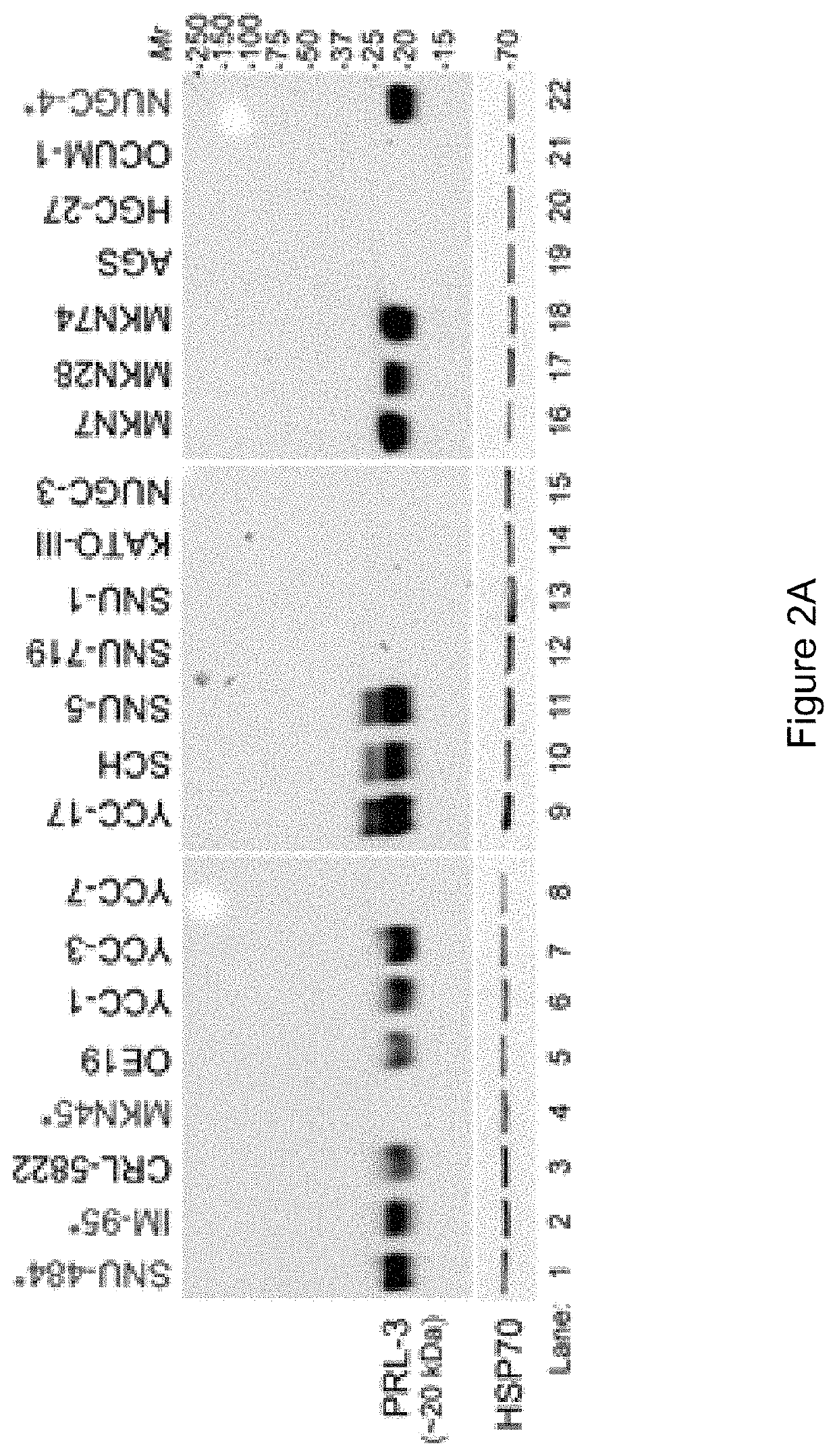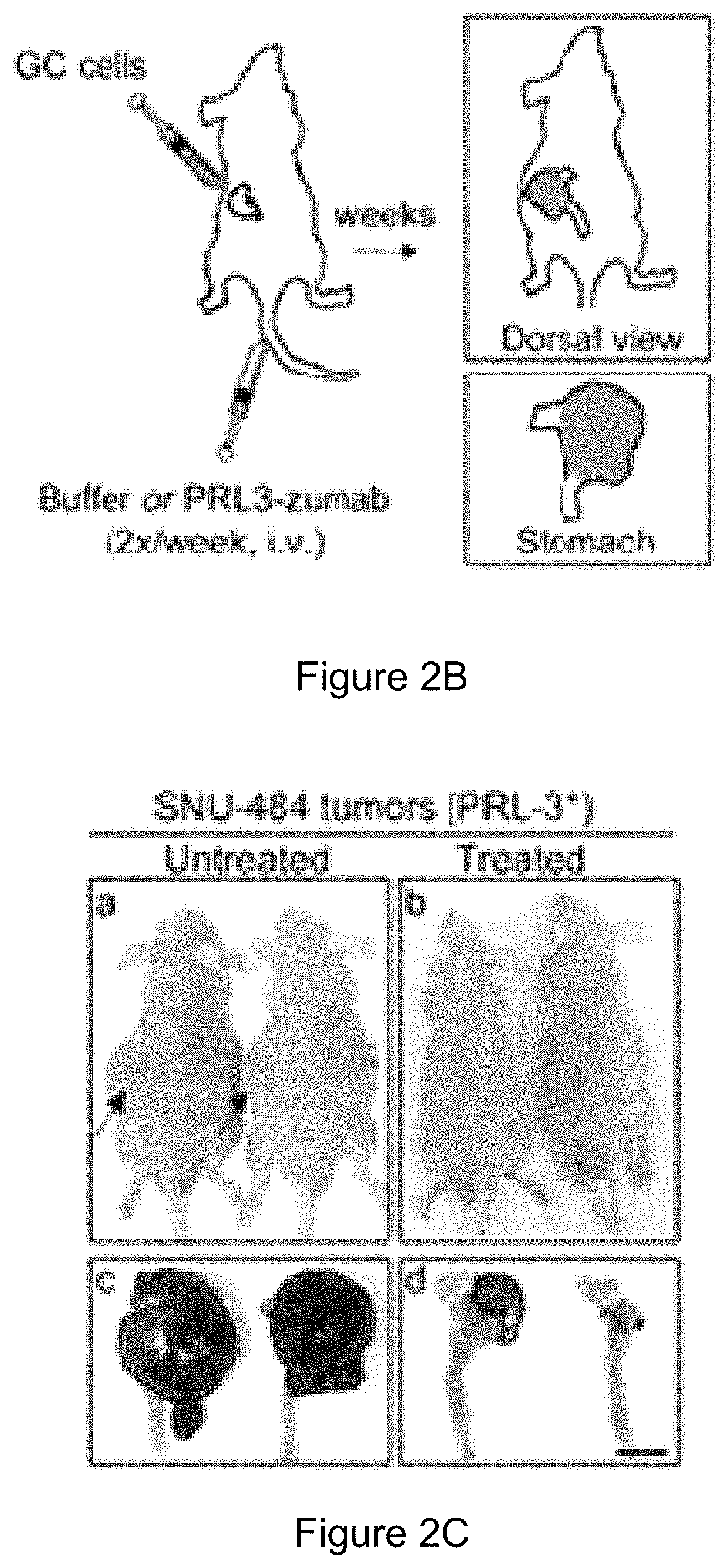PRL3 antibody
a technology of humanized antibodies and antibodies, applied in the field of humanised antibodies, can solve the problems of untapped antibody pool, untapped intracellular therapeutic targets such as phosphatases, kinases, transcription factors, poor overall survival of chemotherapy, etc., and achieve the effects of inhibiting tumor metastasis, reducing tumor size, and reducing tumor siz
- Summary
- Abstract
- Description
- Claims
- Application Information
AI Technical Summary
Benefits of technology
Problems solved by technology
Method used
Image
Examples
example 3
tion of PRL3Zumab Mechanism of Action
[0336]In this study, we mainly focus on the molecular mechanism of action (MOA) to address how PRL-3 antibody could possible bind to its intracellular PRL-3 antigen using ‘seed and soil’ Liver orthotopic tumor model. We investigate from different aspects to reach an important conclusion that indeed ‘Intracellular oncoprotein’ has higher rate in vivo than in vitro to be re-localized to the cell surface as ‘Extracellular oncoprotein’, thus follow a rational basis for tumor elimination via antibody conventional pathways against Extracellular Oncotargets. Consistently, we mechanistically found that PRL3-zumab blocks tumors expressing PRL-3 ‘Intracellular’ antigen required: 1. host FcγII / III receptor interaction, as both FcγII / III blockers abolished treatment efficacy. 2. full antibody activities, mini-body lacking Fc-fragments (CH1 and Ch2 domains) dismiss treatment efficacy, 3. Increase M1 (but not M2) macrophages, B lymphocytes, natural killer cell...
example 2
References For Example 2
[0358]1. Lazo J S, Sharlow E R. Drugging Undruggable Molecular Cancer Targets. Annu Rev Pharmacol Toxicol. 2016; 56:23-40.[0359]2. Guzińska-Ustymowicz K, Pryczynicz A. PRL-3, an emerging marker of carcinogenesis, is strongly associated with poor prognosis. Anticancer Agents Med Chem. 2011; 11(1):99-108.[0360]3. Al-Aidaroos A Q O, Zeng Q. PRL-3 phosphatase and cancer metastasis. J Cell Biochem. 2010; 111(5):1087-98.[0361]4. Guo K, Tang J P, Tan C P B, Wang H, Zeng Q. Monoclonal antibodies target intracellular PRL phosphatases to inhibit cancer metastases in mice. Cancer Biol Ther. 2008; 7(5):750-7.[0362]5. Guo K, Tang J P, Jie L, Al-Aidaroos A Q O, Hong C W, Tan C P B et al. Engineering the first chimeric antibody in targeting intracellular PRL-3 oncoprotein for cancer therapy in mice. Oncotarget. 2012; 3(2):158-71.[0363]6. Thura M, Al-Aidaroos A Q O, Yong W P, Kono K, Gupta A, Lin Y B et al. PRL3-zumab, a first-in-class humanized antibody for cancer therapy. ...
PUM
| Property | Measurement | Unit |
|---|---|---|
| molecular weight | aaaaa | aaaaa |
| molecular weight | aaaaa | aaaaa |
| dissociation constant | aaaaa | aaaaa |
Abstract
Description
Claims
Application Information
 Login to View More
Login to View More - R&D
- Intellectual Property
- Life Sciences
- Materials
- Tech Scout
- Unparalleled Data Quality
- Higher Quality Content
- 60% Fewer Hallucinations
Browse by: Latest US Patents, China's latest patents, Technical Efficacy Thesaurus, Application Domain, Technology Topic, Popular Technical Reports.
© 2025 PatSnap. All rights reserved.Legal|Privacy policy|Modern Slavery Act Transparency Statement|Sitemap|About US| Contact US: help@patsnap.com



